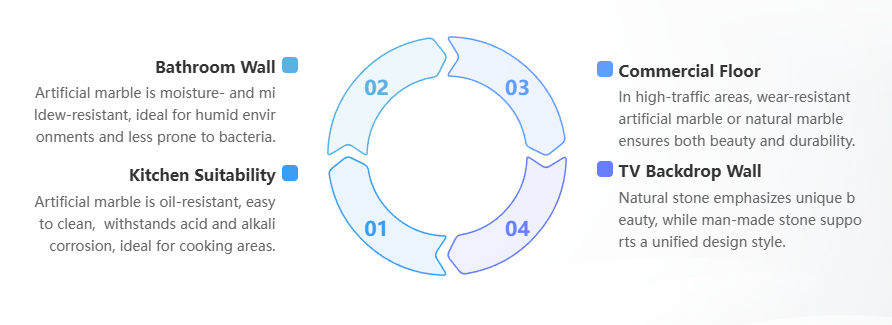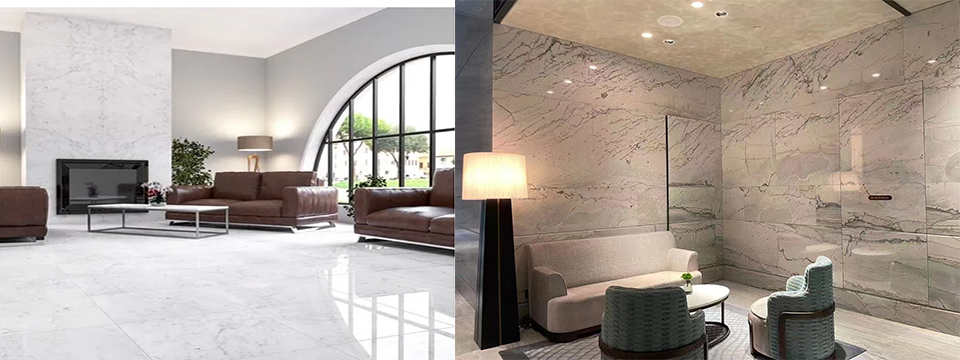Natural vs Artificial Marble: Key Differences
Composition
Natural marble: A metamorphic rock formed naturally by geological processes from calcium carbonate, containing natural mineral impurities.
Artificial marble: A composite material synthesized from resin, stone powder, and other raw materials, with adjustable properties via added pigments.
Aesthetics & Texture
Natural marble: Features one-of-a-kind textures with natural cracks and color gradients, boasting a "sense of natural scarcity".
Artificial marble: Has uniform and controllable textures, supporting customized colors and patterns for consistent styling.
Durability & Maintenance
Natural marble: High in hardness but prone to staining; requires regular sealing for maintenance and is sensitive to corrosion from acidic substances.
Artificial marble: Offers strong stain and corrosion resistance, with simple daily cleaning and no need for frequent maintenance.
Cost
Natural marble: Higher in price (due to difficulties in mining and processing), with rare varieties commanding significant premiums.
Artificial marble: Cost-effective, usually 1/3 to 1/2 the price of natural marble, making it ideal for budget-limited projects.
How to Choose the Right Stone
Application Scenarios
• Kitchen countertops: Prioritize artificial marble (oil-resistant and easy to clean).
• Bathroom walls: In humid environments, artificial marble has better mold resistance.
• Commercial lobby floors: For high-traffic areas, choose natural marble (for high-end texture) or high-wear artificial stone.
• TV backdrops: Opt for natural marble for uniqueness, or artificial stone for stylistic consistency.
Design Style Matching
• Luxury/retro styles: Natural marble’s textures enhance the sense of spatial layering.
• Minimalist/modern styles: Solid-color or regular-patterned artificial marble is more suitable.
Climate & Usage Frequency
• Humid regions: Prioritize artificial marble (strong moisture resistance).
• Areas with large temperature differences: Artificial marble has better stability and is less prone to cracking.

FAQ
1. How to maintain natural marble?
Clean it regularly with neutral detergents, perform sealing treatments 1-2 times a year, and avoid contact with acidic substances such as vinegar and lemon juice.
2. How is artificial marble’s stain resistance and durability?
Its dense surface prevents staining; stains like coffee and soy sauce can be easily wiped off. With normal use, its service life can reach 10-15 years.
3. In which environments can marble be used?
Natural marble is suitable for dry, low-traffic areas; artificial marble is suitable for high-frequency scenarios such as kitchens, bathrooms, and shopping malls.
Conclusion
Choosing between natural and artificial marble hinges on balancing needs and scenarios. Both the uniqueness of natural marble and the practicality of artificial marble can add value to a space. Visit our website to explore more marble varieties and application cases, and let our professional team help you create your ideal space.
Full-industry-chain enterprises like Yuanda Stone, with over 20 years of experience, 3 production bases and one-stop service of "design-production-delivery-installation", represent the core competitiveness in the market.

